#SecurityScan 17: Malabar Exercise, Rafale, India - Russia Oil trade and more
Strengthening and upgrading security forces, strengthening intelligence gathering, cutting off funds for Maoists, cracking down on overground sympathisers and workers, and ‘urban Naxals’and confining them to the jungles
Total Views |
This article is a summary of important events that have taken place in last one week affecting, India's national security.
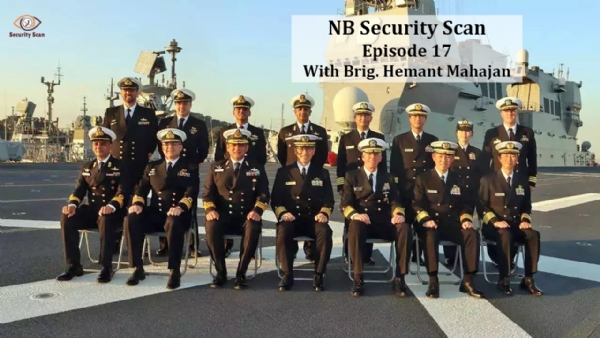
INTERNAL SECURITY
News In Brief
Malabar exercise between navies of India, Japan, US, Australia begins.
India to receive its last Rafale by December 15.
A record five Indian-American lawmakers from the ruling Democrat Party, including Raja Krishnamoorthi, Ro Khanna, Pramila Jayapal and Ami Bera, have been elected to the US House of Representatives, while several others were elected in state legislatures.
LWE Eliminated From Bihar And Jharkhand
In 2010, nearly 100 districts in the country were under total domination of Maoists. Today, only 30 districts have a presence of Maoists, and they are nowhere as powerful in their areas as even eight years ago.
Incidents of violence involving Maoists are down from 2,258 in 2009 to 509 in 2021.Death rate is down by 85 per cent: the death toll in Maoist-related violence was 1,005 in 2010; it was down to 147 in 2021.
Of 32 Maoist-linked incidents in 2022, two were incidents of killing, which resulted in four fatalities, all Maoists (data until 25 September 2022)
The arc of violence has been considerably restricted with just 30 districts accounting 88% of the LWE violence. The Communist Party of India (CPI) (Maoist) continues to be the most potent among the various LWE outfits in the country and accounted for more than 86% of total LWE violent incidents and 96% of resultant deaths.
While the success of eliminating LWE from Bihar and Jharkhand is to be lauded still the core is intact in Chhattisgarh.Following needs to be done:-
Strengthening and upgrading security forces, strengthening intelligence gathering, cutting off funds for Maoists, cracking down on overground sympathisers and workers, and ‘urban Naxals’and confining them to the jungles will have to be done. An all out assault will then have to be launched.
Boost to Make For World-Kalyani strategic systems gets howitzer export order worth USD 155 million
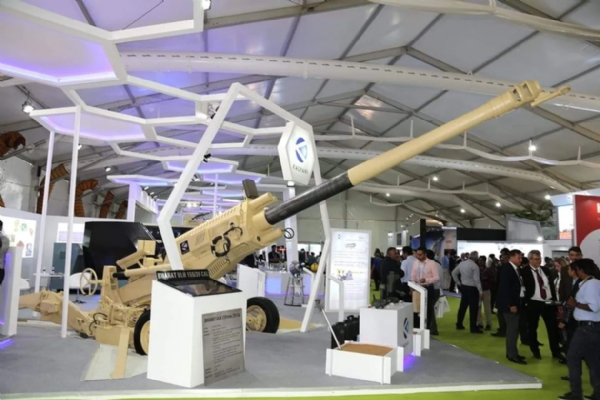
Kalyani is one of the major investors in the defense sector and has been offering a number of weapon systems to India as well as foreign countries. The company has been working with Defence Research and Development Organisation (DRDO) to develop the advanced tower artillery gun system (ATAGS) and has also developed an ultra-light howitzer.
BEL signs MoU with Aerosense Tech to leverage complementary strengths
The MoU aims at leveraging the complementary strengths and capabilities of BEL and Aerosense Technologies Pvt Ltd, said a joint statement from the companies. The tie-up would enable the two companies design and develop drones and soft kill aerial anti-drone systems.
After Pinaka, another Indian Artillery System to be exported
The 155 mm artillery gun, which has been indigenously designed and manufactured, will be delivered to the friendly foreign nation over the next three years. The company has not disclosed the customer or the number of guns to be supplied but has said that the order is for a "non-conflict zone"
The AAP government in Punjab has demonstrated lack of political will in taking action against perpetrators.
Punjab has recorded 29,400 paddy crop residue burning events in the current harvest season from September 15 to November 5, as against 28,792 during the same period last year. The state has some 50,000 tractor-drawn happy, super and smart seeders that can remove the standing paddy stubble and incorporate it into the soil, while simultaneously sowing the seeds of the next wheat crop. These — along with an equal number of other machines (mulchers, rotavators, straw balers, choppers, reversible mould board ploughs, etc) — should, at least on paper, enable a significant part of Punjab’s wheat area to be planted without setting fields on fire. That’s not happening. A ground report has shown even farmers having access to the machines taking the easy way out, unmindful of the public health costs, while Haryana is winning the fight against stubble burning.
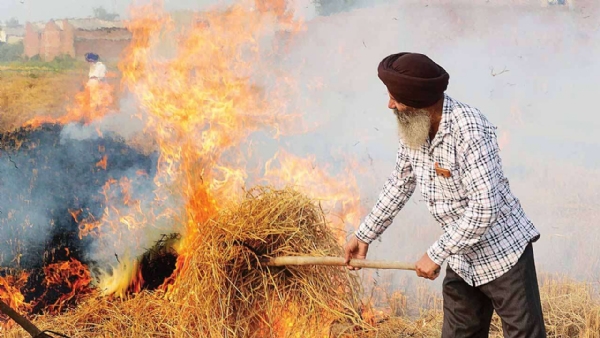
The AAP government in Punjab has demonstrated both incompetence and lack of political will in taking any action against perpetrators — not a single FIR has been filed so far. Given the availability of machines — the seeders, costing Rs 1.75-2.5 lakh each, are subsidised up to 80 per cent stopping stubble burning was possible. Proactiveness was expected from AAP that’s also in power in Delhi, the state bearing the brunt of the farm fires.
Punjab needs to sharply reduce, its three million hectares-plus area now under paddy cultivation. It simply does not have the water resources for this. As a first step, the supply of free electricity, encouraging farmers to pump excess groundwater to grow a crop not best suited to the state’s agro-ecology, must end. This should be accompanied by a planned programme over five years of diverting half of the paddy area to cotton, maize, soyabean, arhar and other kharif pulses and oilseeds. Farmers growing these alternative crops may be given assurance of minimum support price (MSP) that will incentivise them to switch from paddy.
Will the Punjab government show that it has the political will to meet the challenge, to protect the future of the state and National Capital Region and its people, and to stop them from hurtling down the “highway to climate hell?
ECONOMIC SECURITY
Government’s push to facilitate international trade in domestic currency is a good idea
While curtailing dollar dependence and exploring bilateral trade options by paying/settling in domestic currencies makes for sound economics, the idea will only work if Indian exports pick up.
India’s foreign exchange reserves, at $531.08 billion as on October 28, have dipped from a peak of $642.02 billion a year ago. Therefore, the government and the Reserve Bank of India (RBI) are seeking to conserve reserves by facilitating international trade in domestic currency, as opposed to the dollar. To the extent that payments for trade between the two countries happens in rupees, it reduces India’s dollar dependence and depletion in forex reserves.
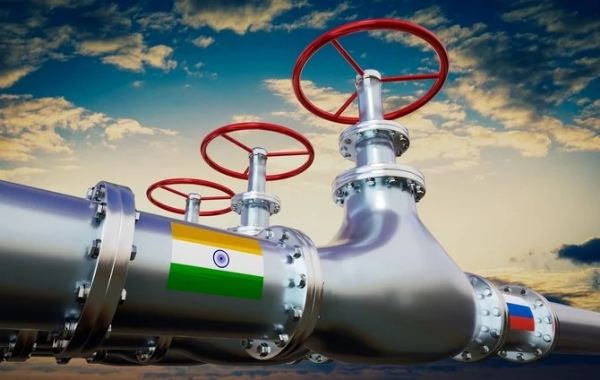
India wants to push similar rupee-based bilateral trade mechanisms with Sri Lanka, Maldives and assorted southeast Asian, African and Latin American countries. How long can this sustain in a deepening sanctions regime? India’s imports from Russia — mainly petroleum, coal, fertilisers and sunflower oil — stood at $21.35 billion during April-September, but its exports to that country were worth just over $1 billion. The trade imbalance would leave far too much unused rupees in the Vostro account. It also explains why the RBI’s alternative rupee trade payment mechanism hasn’t really taken off and Indian refiners are still buying Russian oil using dollars. While curtailing dollar dependence and exploring bilateral trade options by paying/settling in domestic currencies makes for sound economics, it cannot replace the need for India to export more.
India has rightly gone all out to safeguard its interests rather than toeing the line of western powers during the ongoing energy crisis. India, canot reduce its dependence on Russian oil and fertilisers. Instead, the two countries are looking to expand economic cooperation, especially in the energy sector.
Structural Reforms Are Helping Banks
Public sector banks have declared results for the June-September quarter, showing a strong performance with a total net profit of ₹25,685 crore, a 50% year-on-year rise. In the first half of the current fiscal, these banks have returned a profit of ₹40,991 crore, a 31.6% jump year-on-year, riding on strong credit growth. Among the best performers was State Bank of India, which recorded a 74% jump in net profit to ₹13,265 crore. The impressive results unleashed a sense of optimism in the sector, especially because the asset quality of these banks also continues to improve.
There is no doubt that the positive results are the result of deep structural reforms undertaken by the government, in cleaning up bad loans and non-performing assets (NPAs). The government and the Reserve Bank of India (RBI)’s efforts to improve the health of the banking system, have borne fruit.
Extradition Of Economic Offenders
The current week has brought good tidings from British courts for Indian law enforcement agencies. Fugitive diamond merchant Nirav Modi lost his appeal against extradition to India on mental health grounds, two days after a UK court ruled that arms dealer Sanjay Bhandari can be taken to India to face charges of tax evasion and money laundering. The CBI has termed the UK High Court’s judgement in the Nirav case as a ‘reminder’ that fugitives who have evaded the law after committing humongous frauds cannot keep enjoying impunity simply because the jurisdictions have changed.
In 2018 Centre had enacted the Fugitive Economic Offenders Act, which provides for measures to deter such criminals from bypassing the law in India by staying outside the jurisdiction of Indian courts. High up on the most-wanted list is liquor baron Vijay Mallya, who has been living in the UK since March 2016 and is on bail on an extradition warrant executed by Scotland Yard in in a bank loan default case to the tune of over Rs 9,000 crore.
There is no doubt that the UK’s Tier 1 investor visa (golden visa), which was finally withdrawn earlier this year, played a key role in making Britain a safe haven for economic offenders. This visa enabled wealthy fugitives to get British citizenship by investing a minimum of £2 million, with the settlement process being expedited if higher sums were invested. Even as India and Britain finalise the nitty-gritty of their free trade agreement, the existing loopholes that embolden high-profile fraudsters need to be plugged without fail.
EXTERNAL SECURITY
Threat From China On LAC
Defence Minister Rajnath Singh talked about the importance of armed forces maintaining operational readiness across LAC during the severe Himalayan winter is another proof about threat from China. Earlier, the onset of winter used to be a challenging time for the army, along LoC, as cross-border terrorists would step up infiltration bids before the mountain passes closed. But with India and China keeping their troops forward deployed for the third consecutive winter in eastern Ladakh, army now faces a real challenge.
Xi Jinping’s recently instructed PLA to be ready to fight and win wars. Xi has brought in massive changes to the Chinese party-state system by centralising power, securing an unconventional third term for himself, and changing the trajectory of governance of China, internal pressures are bound to build up within Chinese society. And it is to clamp down and deflect attention from these Xi could use PLA against India. Xi has promoted Officers who were in Galvan to the new Chinese Central Military Commission highlights aggressive posture. One of those is He Weidong, now a CMC vice-chairman who led the PLA’s western theatre command during the Doklam standoff with India in 2017.
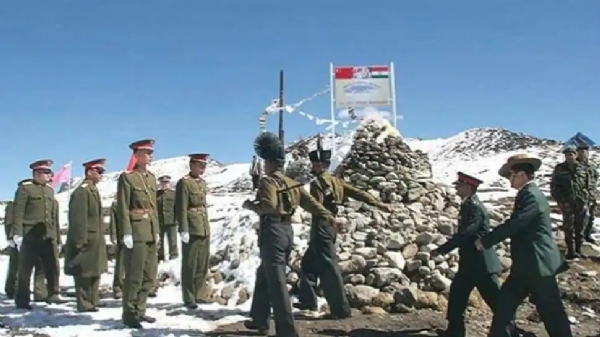
China tries to compartmentalise the border issue and blame bilateral tensions on lack of sufficient understanding between the two sides. This is the old hot-and-cold tactic. India must continue enhancing coordination with Quad members. The ongoing Malabar naval exercise off the coast of Japan is a good example of such coordination. China is India’s enemy number 1.
India should continue to stick to its stance that it cannot be business as usual unless Beijing drops its aggressive posture and restores status quo ante at LAC.
Assessing the Non-Kinetic Battle space
Cyber warfare, electronic warfare, information operations, intelligence, and space technology all came into play in the lead-up to the Ukraine war. The ongoing conflict offers many lessons that can help India to prepare for future conflicts. All are keenly watching these “gray-zone” tactics play out, hoping to determine how best to use them for the battle spaces of tomorrow .China, is looking for a competitive advantage in the cyber battle space.
India should learn, how to use non-kinetic tools to deter kinetic war. India should lead the way by developing technology, software, and algorithms to help counter disinformation. Increasing cooperation between the government and the private sector on matters of critical infrastructure protection is very important. If organized and conditioned properly, non-kinetic tactics (both current and future) can play a key role in any overall strategy.
Jaishankar’s Moscow visit
Bilateral issues were a major part of the visit. As Lavrov noted, Russia-India trade has jumped 170 per cent over the previous year to $17 billion. Most of this comprises oil imports by India. But Delhi has not yet been able to convince Moscow to accept rupee payments. Lavrov’s remarks that both sides had detailed discussions about military and technical co-operation including joint production of weaponry belie assessments that India is planning to wean off from its dependence on Russian military hardware.
The visit underlines the all-weather nature of India-Russia relations despite differences on Ukraine. As the External Affairs Minister put it, if it is a partnership that works to India's advantage, it is in India's interest to keep it going.
Mr Khan And The Army Headed For A Dangerous Confrontation
The gunfire at former Pakistan Prime Minister (PM) Imran Khan’s rally last week has plunged the country into fresh chaos, at a time it is grappling with a range of problems, including an economic downturn and a resurgent Tehreek-e-Taliban Pakistan. The circumstances surrounding the attack during an event aimed at pressuring the government to call early elections continue to be murky.
Mr Khan named Pakistan PM Shehbaz Sharif, interior minister Rana Sanaullah and a senior Inter-Services Intelligence (ISI) officer, Major General Faisal Naseer, as being behind a conspiracy to target him, but no police complaint was registered.
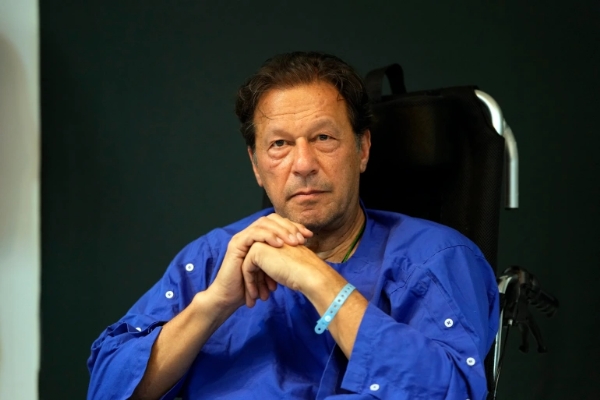
With the former PM adopting an unyielding position towards both the military and his rivals, Pakistan resembles a pressure cooker with no sign of tensions easing. Mr Khan’s attack on the army is unprecedented, as is his naming of senior ISI officials. The military resorted to the unprecedented act of fielding the ISI chief in a news conference that highlighted Mr Khan’s alleged misdeeds. Mr Khan and the army seem to be headed for a dangerous confrontation.
ENVIRONMENTAL SECURITY - COP27 summit in Egypt
UN Secretary General Antonio Guterres has hit the nail on the head: ‘We are on a highway to climate hell with our foot on the accelerator.’ During his speech at the COP27 summit in Egypt, he has warned that the uncontrolled rise in greenhouse gas emissions and global temperatures will make climate chaos irreversible. Cooperate or perish – that’s his simple message to humanity.
A key reason for the sorry state of affairs is the rich countries’ reluctance to expedite the transition from fossil fuels and give adequate funds to poorer nations to tackle climate change. Underprivileged countries, mostly from the African continent where the summit is being held, have repeatedly sought compensation from rich nations for losses caused by climate-induced disasters such as floods, storms, heat waves and wildfires.
Amid the persistent gloom, the newly unveiled Executive Action Plan for the Early Warnings for All offers a ray of hope. The plan, prepared by the World Meteorological Organisation and its partners, calls for new targeted investments of $3.1 billion between 2023 and 2027. Its purpose is to facilitate climate adaptation and resilience by offering services related to disaster risk knowledge, forecasting and communication of early warnings anywhere on the planet. Timely alerts are expected to help underprepared nations get their act together and minimise the damage likely to be caused by extreme weather events.
The Chinese virus pandemic that ravaged the world for over two years underlined the significance of international cooperation and coordination. It finally dawned on all countries that nobody was safe until everybody was safe. The same spirit should guide collaborative efforts to deal with climate change. World should make a commitment to phasing out coal by 2040. A green transition is the need of the hour, but such a process should be gradual, equitable and just. The biggest polluters that is the developed countries must not be allowed to drag their feet on funding. After all, they are the ones who have pushed the earth to the brink.
Winning Perception Management-New I&B Ministry guidelines-TV channels obliged to promote ‘national interest’
The Union Government’s revised guidelines for uplinking and downlinking of satellite TV channels, aimed at making India a ‘teleport hub for other countries’, include one new section ,the clause that states TV channels must devote at least 30 minutes every day to content designed to promote ‘public service and national interest’. The Cabinet has given its approval to guidelines that have made it obligatory for TV channels to telecast such content on eight themes — education and spread of literacy; agriculture and rural development; health and family welfare; science and technology; welfare of women; welfare of the weaker sections of society; protection of environment and of cultural heritage; and national integration. The rationale for the move, according to the policy document, lies in the fact that ‘airwaves/frequencies are public property and need to be used in the best interest of the society’.

Though the guidelines came into effect on November 9, the Ministry of Information & Broadcasting has said that TV channels would be given time to conceptualise and create content on the eight themes. The guidelines are binding on all channels except foreign ones and those devoted to wildlife and live telecast of sports. According to the ministry, in case any channel is found to be non-compliant, an explanation will be sought from it.
The newspapers and TV channels today are full of negative news in the country, while the fact is lot of positive things are also taking place and they must be brought to the notice of common people. The media should not create an atmosphere of despondency that this country has no future. Bad news is good news for media for increasing their TRP, however in the interest of the country positive news also should be given due importance. Most of the bad news in the International Media about India is highlighted by Indians who have a very negative opinion about their own country. This must stop.
On the face of it, there seems little to fault in the choice of the eight themes or even the advisory — after all, the idea of promoting ‘national interest’ is good.
--


